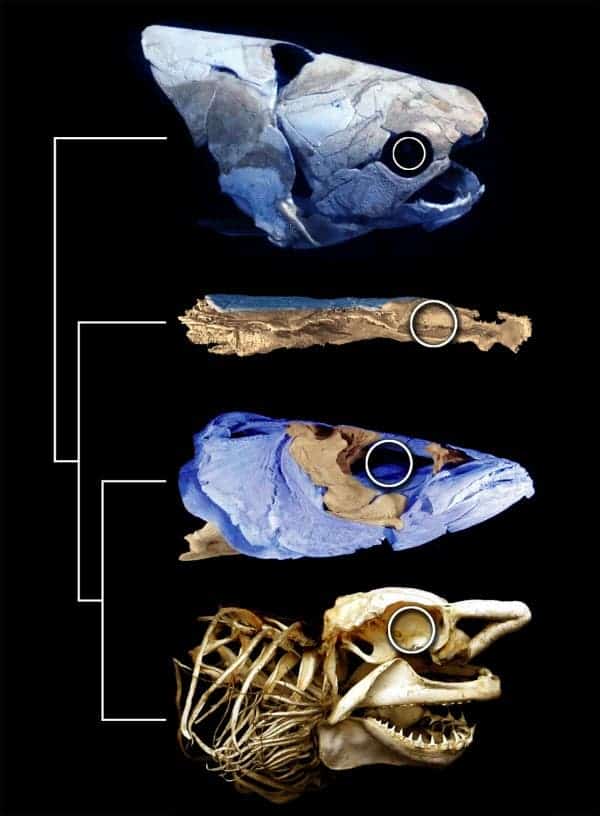As far as charting the tree of life goes, a basic indicator used to distinguished between classes of animals is the skeleton. Fish, for instance, can have a cartilaginous skeleton and here were remind sharks, rays and skates, or a bony skeleton like the sturgeon or ocean sunfish. In fact, bony fish or Osteichthyes as they’re also known represent the largest class of vertebrates in existence today. Based on fossil evidence and genome analysis, scientists know that the two groups diverged from a common ancestor around 420 million years ago, but we’ve yet to find actual fossil of it. Things are shaping up though after paleontologists have identified an Early Devonian fish from Siberia, approximately 415 million years old, which bears features of both classes.
In search of the common fish ancestor

Initially, the specimen was classified in a 1992 paper as a bony fish belonging to the genus Dialipina, based on the scales and the head bones’ similarity to those of bony fish called Dialipina from the New Siberian Islands. Martin Brazeau at Imperial College London found it odd, however, that a bony fish was this old, so he requested more details. Eventually, him and his team were convinced that this was worth a thorough investigation.
[ALSO SEE] Ancient 385-million-year-old fish pioneered sex
The scientists performed micro CT scans to peek inside the delicate structure of the bones that encase the fragile head of the fish, whose fossil was only one centimeter long. Because of the shape of the skull roof and the enamel on the scales, the fish was naturally classified as a bony one. Inside, however, things are a bit different. The CT scans showed how the skull is traversed by nerves and blood vessels around the brain more closely resembled those of cartilaginous fish. As such, the fish has features of both classes. The fossil was eventually named Janusiscus schultzei, in honor to the two-faced Roman god Janus.
The feeds previous speculations that suggested that both classes of jawed fish had features of bony fish, but the cartilaginous ones eventually lost these. It also supports a 2014 study that showed that a 325-million-year-old fossil shark had a surprising number of bony fish features, suggesting that the ancestor also had these features and that sharks may be more specialized than originally believed.
“[…] Both groups evolved different adaptations, and they’ve also retained different primitive features from their ancestor,” Giles explains. “Each group has found a different way of approaching the problem of living in the sea.”
“Janusiscus is a fascinating discovery,” says John Long, a paleontologist at Flinders University in Adelaide, Australia. It’s also one that couldn’t have been made without the use of a detailed CT scan, he notes. “Such use of modern technology is transforming the way we do paleontology by revealing new layers of information in these critical transitional fossils.”
Findings appeared in Nature // via Science


